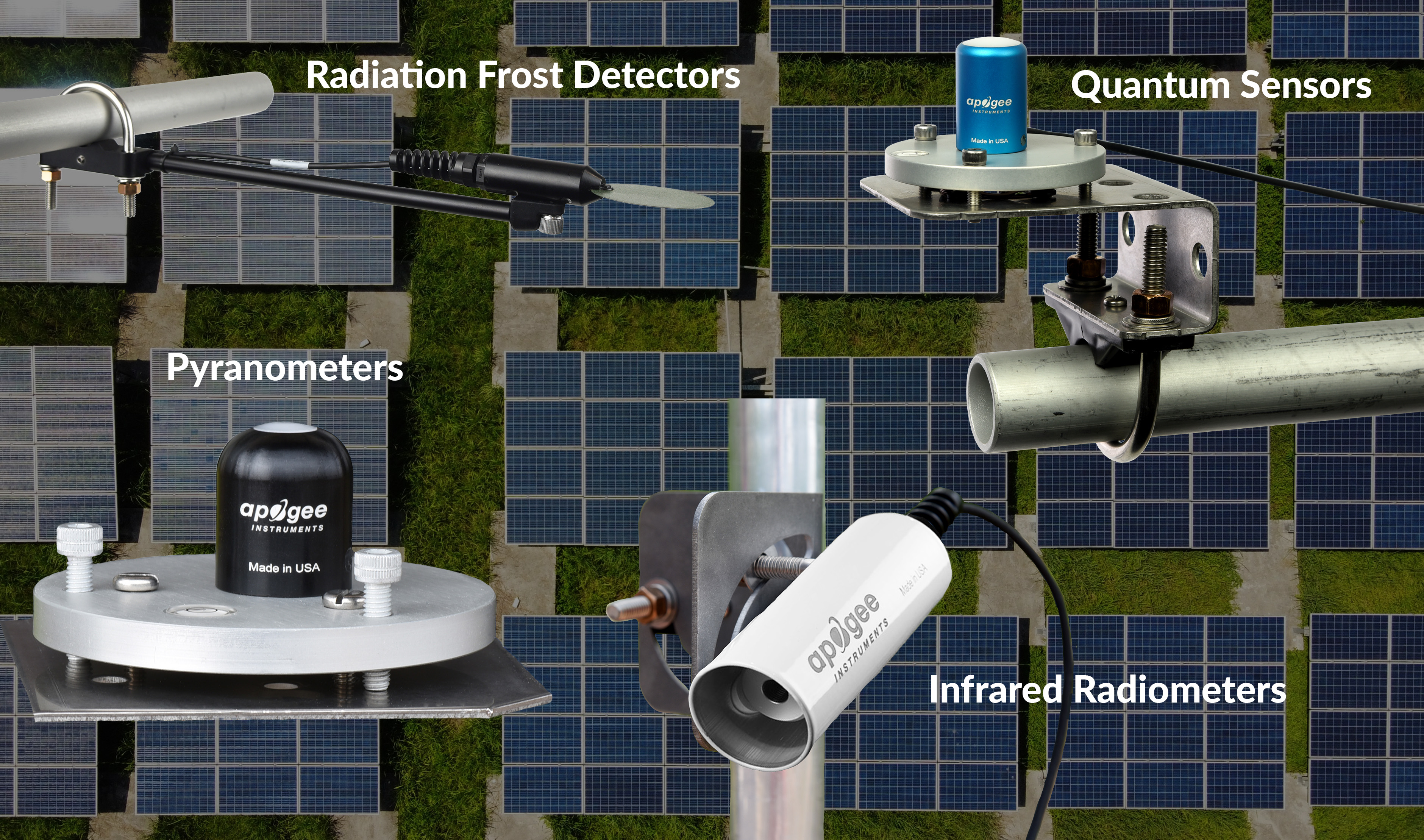Apogee and Agrivoltaics

Apogee Instruments recently attended the fourth annual AgriVoltaics Conference in Denver, Colorado.
Agrivoltaics is an innovative methodology that blends solar energy with agriculture. In this eco-friendly system, farmers cultivate crops under or adjacent to solar panels. Popular plants grown with agrivoltaics include root vegetables like potatoes, beets, and carrots; leafy greens like lettuce and spinach; and some berries like strawberries, raspberries, and blueberries.
The concept of agrivoltaics was proposed in 1982 by Adolf Goetzberger and Armin Zastrow. Agrivoltaics is also referred to as agrisolar, dual use solar, and low impact solar. Solar grazing is a similar concept where livestock, like cows and sheep, graze on the pasture grass around the solar panels and reduce the need for mowing.
Agrivoltaic installations provide many benefits such as:
- Enhancing land-use efficiency through providing space for both farming and power generation
- Extending the lifespan of solar panels through cooling effects of water evaporation
- Increasing crop yields via effective shading mechanisms
- Diversifying income for farmers with both power generation and crop development
- Developing renewable energy and lowering the carbon footprint
While agrivoltaics is promising, its research and technology are still in the beginning stages. Some potential drawbacks and concerns include:
- High cost of installing complex mounting systems and maintaining solar panels
- Space demands for solar panels could limit the availability of farmlands
- Crops like wheat and barley do not flourish with the increased shade and cooling of agrivoltaics
- Potential for disruption to suburban and urban communities as renewable energy infrastructure moves closer to cities
Apogee's sensors play a pivotal role in data collection and development in this budding field. Currently, Apogee’s full-spectrum quantum sensors are installed to monitor photosynthetically active radiation in research plots at “Jack’s Solar Garden” in Colorado. A vineyard in France has also installed Apogee infrared radiometers to measure the temperature of the solar panels and plants.
These are just a few exciting examples of how Apogee’s sensors, like quantum meters, pyranometers, infrared radiometers, and radiation frost detectors, are helping to shape the future of agrivoltaics. Stay tuned for new information and insight into the world of agrivoltaics using Apogee products.
